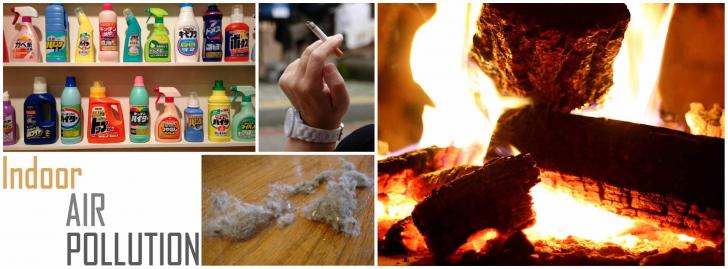Indoor air pollution is a term used to characterize the pollution of the air inside our homes, office workplaces and other living spaces. The extent of air pollution outside in urban cities and industrial areas is obvious to all of us.
But most of us are not aware of the dire condition of the air that we breathe inside our homes. In fact, the air inside is supposed to be more harmful to our health than the air outside.
Indoor air pollution has in fact become a pressing issue and has been ranked among the greatest environmental concerns that people are now facing.
Indoor air quality is the air quality inside our living structures. People spend around 90% of their day indoors. So the quality of air that we breathe indoors should be of great concern to us.
The problem of indoor air pollution is significantly more severe in the developing nations than in the developed ones. WHO estimates that almost 3 billion people in the developing world rely on sources such as wood, dung, charcoal, coal and other forms of biomass for cooking their food. This puts them at a higher risk of health problems related to indoor air pollution. Women and children are more affected by this than men.
Sources Causing Indoor Air Pollution

- Burning fuels such as gas, kerosene, oil and wood stoves
- Chemicals found in household products used for cleaning, personal care, adhesives, wall paints and pesticides
- Dust mites, pollen, mold, and allergens from pets
- Microbes
- Improper or lack of ventilation
- Tobacco smoke
- Radon gas that occurs naturally in the environment can enter our homes which can cause lung cancer
Short Term Exposure
There can be immediate effects on our health after exposure to bad air for short term. These effects include eye irritation, coughing, fatigue, headaches and dizziness. Short term exposure can also worsen existing respiratory ailments like asthma.
Long Term Exposure
Serious health problems can occur if we are exposed to harmful air pollution for long period of time. After long terms of exposure we can suffer from respiratory diseases like asthma and chronic obstructive pulmonary disease. Heart diseases and cancers are also the possible effects.
Deaths from Indoor Air Pollution Around the World
According to the World Health Organization, about 4.3 million people die because of exposure to harmful indoor air pollution in a year. Out of this, 1.69 million deaths occur in South East Asia and 1.62 million in the West Pacific. Africa comes third in place with around 600,000 deaths and 200,000 die in a year in the Eastern Mediterranean. Almost 100,000 people die in Europe, 81,000 in North and South America and close to 19,000 people die in countries with the highest incomes.
WHO has reported that pneumonia due to inhalation of particulate matter found indoors is the cause of over 50% of deaths in children of age less than five years old.
Measures to Reduce Indoor Air Pollution
Reducing the sources of pollutants is the most effective way to control indoor pollution. Some basic measures that can help maintain good quality of air are as follows
1. Minimize different pollutants
-
Reduce tobacco smoke by avoiding smoking indoors
-
Check for certifications of products from known and dignified organizations
-
Controlled use of concentrated cleaning products
2. Sanitation
-
Regularly wash bedding to reduce allergens
-
Remove shoes outside rooms to control the spread of dirt from outdoors
-
Consider buying high efficiency vacuum cleaners to remove dust
3. Minimize moisture
-
Use dehumidifiers to reduce relative humidity
-
Make timely repairs to prevent any leaks
4. Effective ventilation
-
Keep windows and doors open if temperature is suitable
-
Use properly fitted mechanical filters and change them according to instructions of manufacturers